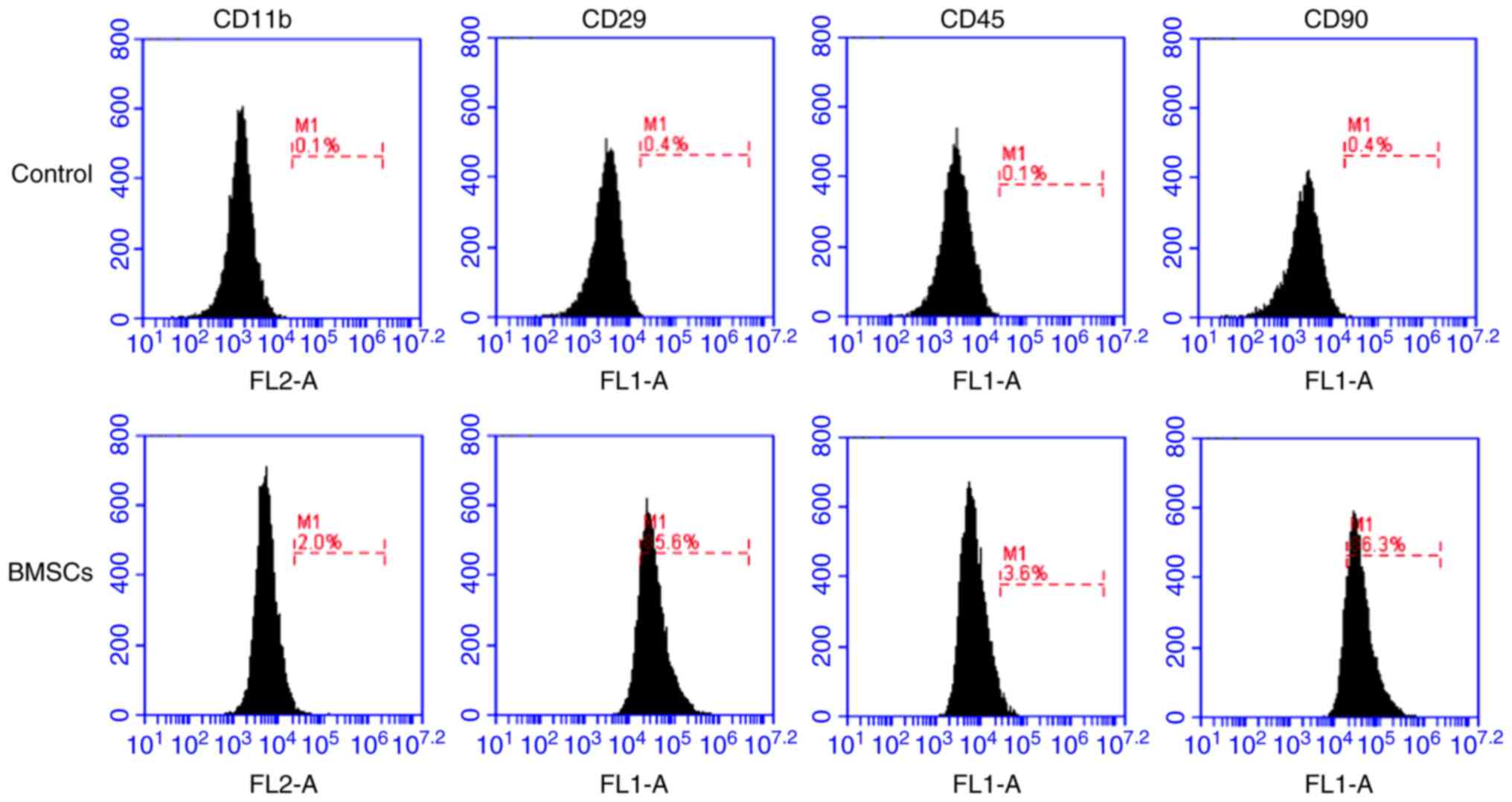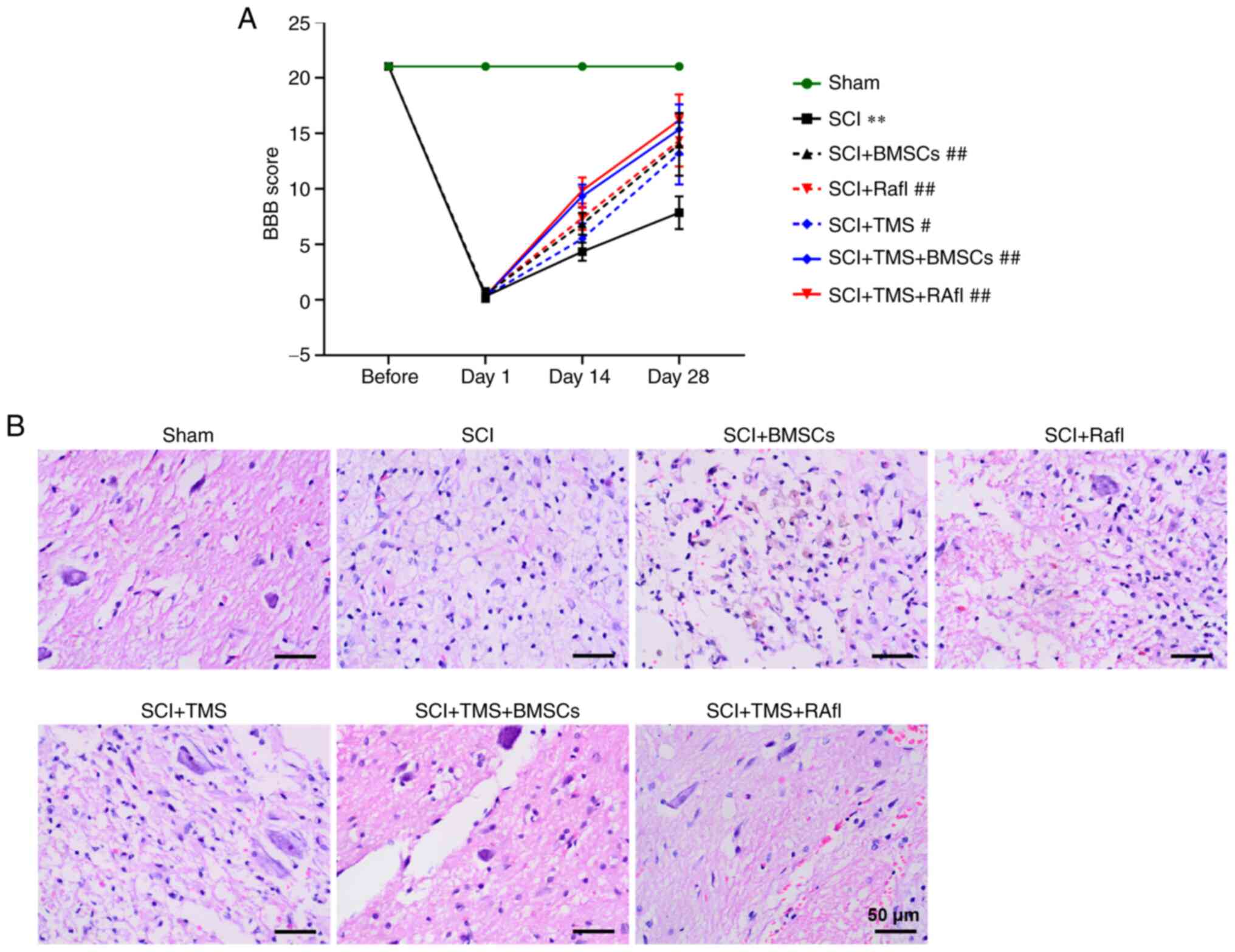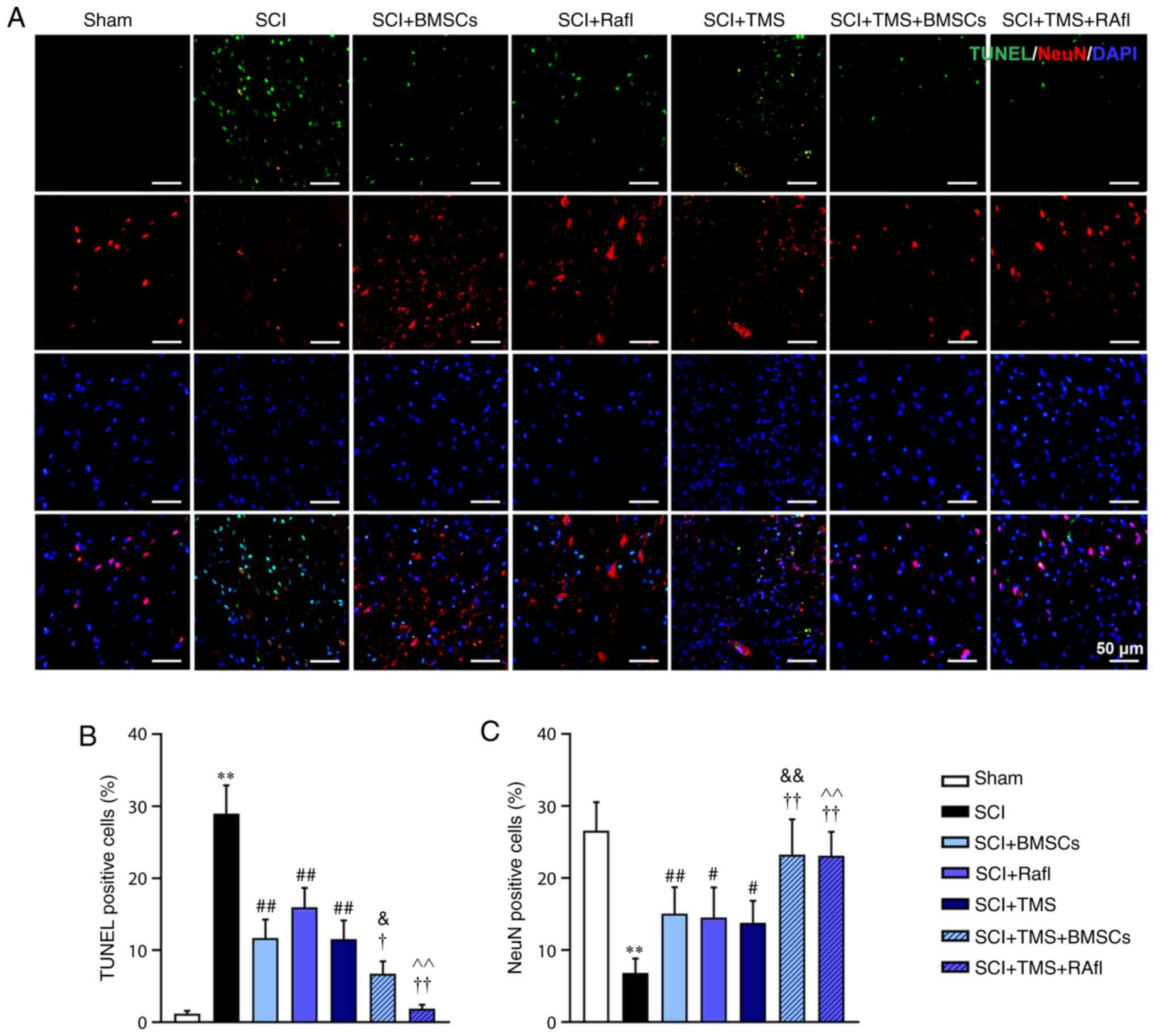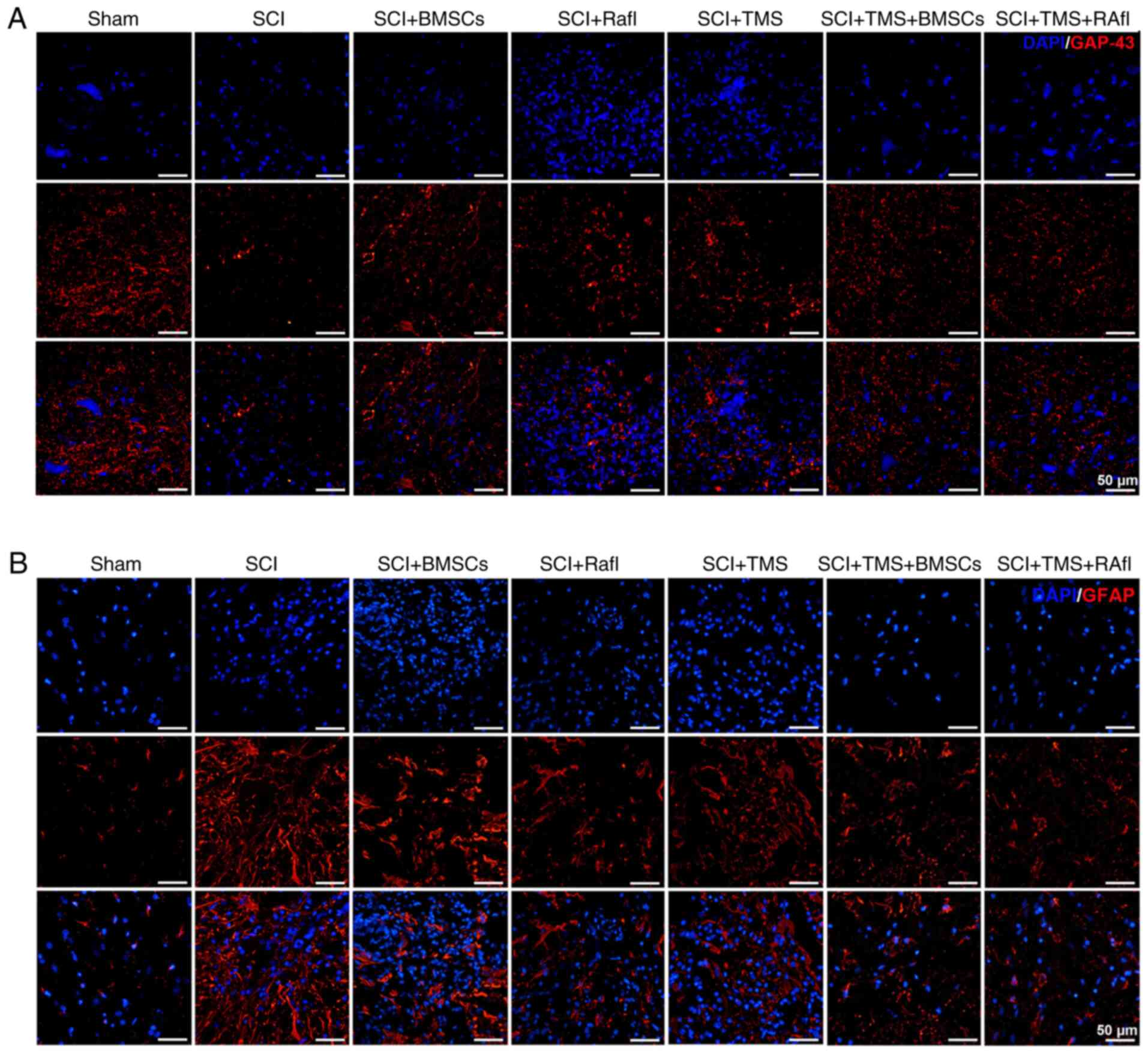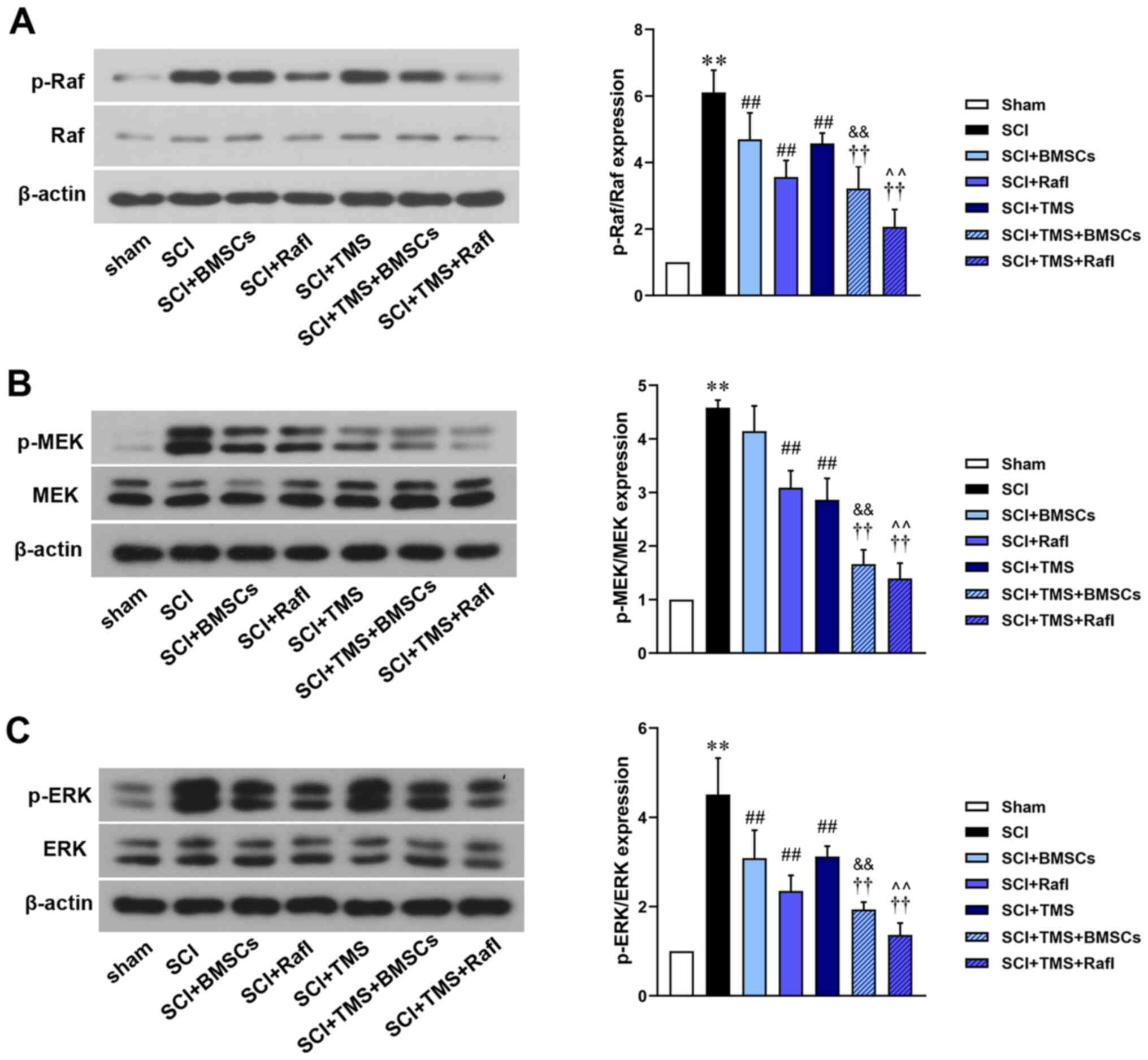|
1
|
Kim YH, Ha KY and Kim SI: Spinal cord
injury and related clinical trials. Clin Orthop Surg. 9:1–9. 2017.
View Article : Google Scholar : PubMed/NCBI
|
|
2
|
Wang YT, Lu XM, Chen KT, Shu YH and Qiu
CH: Immunotherapy strategies for spinal cord injury. Curr Pharm
Biotechnol. 16:492–505. 2015. View Article : Google Scholar : PubMed/NCBI
|
|
3
|
Manchikanti L, Singh V, Datta S, Cohen SP
and Hirsch JA; American Society of Interventional Pain Physicians,
: Comprehensive review of epidemiology, scope, and impact of spinal
pain. Pain Physician. 12:E35–E70. 2009.PubMed/NCBI
|
|
4
|
Kwon BK, Tetzlaff W, Grauer JN, Beiner J
and Vaccaro AR: Pathophysiology and pharmacologic treatment of
acute spinal cord injury. Spine J. 4:451–464. 2004. View Article : Google Scholar : PubMed/NCBI
|
|
5
|
Spinal Cord Injury (SCI) 2016 facts and
figures at a glance. J Spinal Cord Med. 39:493–494. 2016.
View Article : Google Scholar : PubMed/NCBI
|
|
6
|
Ditunno JF Jr: Functional outcomes in
spinal cord injury (SCI): Quality care versus cost containment. J
Spinal Cord Med. 20:1–7. 1997. View Article : Google Scholar : PubMed/NCBI
|
|
7
|
McDonald JW and Sadowsky C: Spinal-cord
injury. Lancet. 359:417–425. 2002. View Article : Google Scholar : PubMed/NCBI
|
|
8
|
Rowland JW, Hawryluk GW, Kwon B and
Fehlings MG: Current status of acute spinal cord injury
pathophysiology and emerging therapies: Promise on the horizon.
Neurosurg Focus. 25:E22008. View Article : Google Scholar : PubMed/NCBI
|
|
9
|
Ren Z, Chen X, Yang J, Kress BT, Tong J,
Liu H, Takano T, Zhao Y and Nedergaard M: Improved axonal
regeneration after spinal cord injury in mice with conditional
deletion of ephrin B2 under the GFAP promoter. Neuroscience.
241:89–99. 2013. View Article : Google Scholar : PubMed/NCBI
|
|
10
|
Yang T, Dai Y, Chen G and Cui S:
Dissecting the dual role of the glial scar and scar-forming
astrocytes in spinal cord injury. Front Cell Neurosci. 14:782020.
View Article : Google Scholar : PubMed/NCBI
|
|
11
|
Benninger F, Glat MJ, Offen D and Steiner
I: Glial fibrillary acidic protein as a marker of astrocytic
activation in the cerebrospinal fluid of patients with amyotrophic
lateral sclerosis. J Clin Neurosci. 26:75–78. 2016. View Article : Google Scholar : PubMed/NCBI
|
|
12
|
Okada S, Hara M, Kobayakawa K, Matsumoto Y
and Nakashima Y: Astrocyte reactivity and astrogliosis after spinal
cord injury. Neurosci Res. 126:39–43. 2018. View Article : Google Scholar : PubMed/NCBI
|
|
13
|
Curtis R, Green D, Lindsay RM and Wilkin
GP: Up-regulation of GAP-43 and growth of axons in rat spinal cord
after compression injury. J Neurocytol. 22:51–64. 1993. View Article : Google Scholar : PubMed/NCBI
|
|
14
|
Keefe KM, Sheikh IS and Smith GM:
Targeting neurotrophins to specific populations of neurons: NGF,
BDNF, and NT-3 and their relevance for treatment of spinal cord
injury. Int J Mol Sci. 18:5482017. View Article : Google Scholar
|
|
15
|
Barker AT, Jalinous R and Freeston IL:
Non-invasive magnetic stimulation of human motor cortex. Lancet.
1:1106–1107. 1985. View Article : Google Scholar : PubMed/NCBI
|
|
16
|
Pashut T, Wolfus S, Friedman A, Lavidor M,
Bar-Gad I, Yeshurun Y and Korngreen A: Mechanisms of magnetic
stimulation of central nervous system neurons. PLoS Comput Biol.
7:e10020222011. View Article : Google Scholar : PubMed/NCBI
|
|
17
|
Rothwell JC: Techniques and mechanisms of
action of transcranial stimulation of the human motor cortex. J
Neurosci Methods. 74:113–122. 1997. View Article : Google Scholar : PubMed/NCBI
|
|
18
|
Cantello R: Applications of transcranial
magnetic stimulation in movement disorders. J Clin Neurophysiol.
19:272–293. 2002. View Article : Google Scholar : PubMed/NCBI
|
|
19
|
de Araujo AVL, Barbosa VRN, Galdino GS,
Fregni F, Massetti T, Fontes SL, de Oliveira Silva D, da Silva TD,
Monteiro CBM, Tonks J and Magalhães FH: Effects of high-frequency
transcranial magnetic stimulation on functional performance in
individuals with incomplete spinal cord injury: Study protocol for
a randomized controlled trial. Trials. 18:5222017. View Article : Google Scholar : PubMed/NCBI
|
|
20
|
Kumru H, Kofler M, Valls-Sole J and Vidal
J: Brainstem reflex excitability after high-frequency repetitive
transcranial magnetic stimulation in healthy and spinal cord injury
subjects. Brain Res Bull. 147:86–91. 2019. View Article : Google Scholar : PubMed/NCBI
|
|
21
|
Aznar J and Sanchez JL: Embryonic stem
cells: Are useful in clinic treatments? J Physiol Biochem.
67:141–144. 2011. View Article : Google Scholar : PubMed/NCBI
|
|
22
|
Ogawa Y, Sawamoto K, Miyata T, Miyao S,
Watanabe M, Nakamura M, Bregman BS, Koike M, Uchiyama Y, Toyama Y
and Okano H: Transplantation of in vitro-expanded fetal neural
progenitor cells results in neurogenesis and functional recovery
after spinal cord contusion injury in adult rats. J Neurosci Res.
69:925–933. 2002. View Article : Google Scholar : PubMed/NCBI
|
|
23
|
Tsuji O, Miura K, Okada Y, Fujiyoshi K,
Mukaino M, Nagoshi N, Kitamura K, Kumagai G, Nishino M, Tomisato S,
et al: Therapeutic potential of appropriately evaluated
safe-induced pluripotent stem cells for spinal cord injury. Proc
Natl Acad Sci USA. 107:12704–12709. 2010. View Article : Google Scholar : PubMed/NCBI
|
|
24
|
Miao C, Lei M, Hu W, Han S and Wang Q: A
brief review: The therapeutic potential of bone marrow mesenchymal
stem cells in myocardial infarction. Stem Cell Res Ther. 8:2422017.
View Article : Google Scholar : PubMed/NCBI
|
|
25
|
Fehlings MG and Vawda R: Cellular
treatments for spinal cord injury: The time is right for clinical
trials. Neurotherapeutics. 8:704–720. 2011. View Article : Google Scholar : PubMed/NCBI
|
|
26
|
Mannoji C, Koda M, Kamiya K, Dezawa M,
Hashimoto M, Furuya T, Okawa A, Takahashi K and Yamazaki M:
Transplantation of human bone marrow stromal cell-derived
neuroregenrative cells promotes functional recovery after spinal
cord injury in mice. Acta Neurobiol Exp (Wars). 74:479–488.
2014.PubMed/NCBI
|
|
27
|
Roberts PJ and Der CJ: Targeting the
Raf-MEK-ERK mitogen-activated protein kinase cascade for the
treatment of cancer. Oncogene. 26:3291–3310. 2007. View Article : Google Scholar : PubMed/NCBI
|
|
28
|
Cao FJ, Zhang X, Liu T, Li XW, Malik M and
Feng SQ: Up-regulation of Ras/Raf/ERK1/2 signaling in the spinal
cord impairs neural cell migration, neurogenesis, synapse
formation, and dendritic spine development. Chin Med J (Engl).
126:3879–3885. 2013.PubMed/NCBI
|
|
29
|
Liu T, Cao FJ, Xu DD, Xu YQ and Feng SQ:
Upregulated Ras/Raf/ERK1/2 signaling pathway: A new hope in the
repair of spinal cord injury. Neural Regen Res. 10:792–796. 2015.
View Article : Google Scholar : PubMed/NCBI
|
|
30
|
Sugaya T, Kanno H, Matsuda M, Handa K,
Tateda S, Murakami T, Ozawa H and Itoi E: B-RAF(V600E) inhibitor
dabrafenib attenuates RIPK3-mediated necroptosis and promotes
functional recovery after spinal cord injury. Cells. 8:15822019.
View Article : Google Scholar
|
|
31
|
Woller SA, Malik JS, Aceves M and Hook MA:
Morphine self-administration following spinal cord injury. J
Neurotrauma. 31:1570–1583. 2014. View Article : Google Scholar : PubMed/NCBI
|
|
32
|
Basso DM, Beattie MS and Bresnahan JC:
Graded histological and locomotor outcomes after spinal cord
contusion using the NYU weight-drop device versus transection. Exp
Neurol. 139:244–256. 1996. View Article : Google Scholar : PubMed/NCBI
|
|
33
|
Sandhir R, Gregory E, He YY and Berman NE:
Upregulation of inflammatory mediators in a model of chronic pain
after spinal cord injury. Neurochem Res. 36:856–862. 2011.
View Article : Google Scholar : PubMed/NCBI
|
|
34
|
National Research Council (US) Committee
for the Update of the Guide for the Care and Use of Laboratory
Animals, . Guide for the Care and Use of Laboratory Animals, 8th
edition. National Academies Press (US); Washington, DC: 2011
|
|
35
|
Chen Q, Duan X, Xu M, Fan H, Dong Y, Wu H,
Zhang M, Liu Y, Nan Z, Deng S and Liu X: BMSC-EVs regulate Th17
cell differentiation in UC via H3K27me3. Mol Immunol. 118:191–200.
2020. View Article : Google Scholar : PubMed/NCBI
|
|
36
|
Eckert MJ and Martin MJ: Trauma: Spinal
cord injury. Surg Clin North Am. 97:1031–1045. 2017. View Article : Google Scholar : PubMed/NCBI
|
|
37
|
Lee BB, Cripps RA, Fitzharris M and Wing
PC: The global map for traumatic spinal cord injury epidemiology:
Update 2011, global incidence rate. Spinal Cord. 52:110–116. 2014.
View Article : Google Scholar : PubMed/NCBI
|
|
38
|
Awad BI, Carmody MA, Zhang X, Lin VW and
Steinmetz MP: Transcranial magnetic stimulation after spinal cord
injury. World Neurosurg. 83:232–235. 2015. View Article : Google Scholar : PubMed/NCBI
|
|
39
|
Cha HG, Ji SG and Kim MK: Effect of
high-frequency repetitive transcranial magnetic stimulation on
motor cortical excitability and sensory nerve conduction velocity
in subacute-stage incomplete spinal cord injury patients. J Phys
Ther Sci. 28:2002–2004. 2016. View Article : Google Scholar : PubMed/NCBI
|
|
40
|
Lin L, Lin H, Bai S, Zheng L and Zhang X:
Bone marrow mesenchymal stem cells (BMSCs) improved functional
recovery of spinal cord injury partly by promoting axonal
regeneration. Neurochem Int. 115:80–84. 2018. View Article : Google Scholar : PubMed/NCBI
|
|
41
|
Wu S, Suzuki Y, Ejiri Y, Noda T, Bai H,
Kitada M, Kataoka K, Ohta M, Chou H and Ide C: Bone marrow stromal
cells enhance differentiation of cocultured neurosphere cells and
promote regeneration of injured spinal cord. J Neurosci Res.
72:343–351. 2003. View Article : Google Scholar : PubMed/NCBI
|
|
42
|
Wang F, Zhang C, Hou S and Geng X:
Synergistic effects of mesenchymal stem cell transplantation and
repetitive transcranial magnetic stimulation on promoting autophagy
and synaptic plasticity in vascular dementia. J Gerontol A Biol Sci
Med Sci. 74:1341–1350. 2019. View Article : Google Scholar : PubMed/NCBI
|
|
43
|
Anderson KD, Abdul M and Steward O:
Quantitative assessment of deficits and recovery of forelimb motor
function after cervical spinal cord injury in mice. Exp Neurol.
190:184–191. 2004. View Article : Google Scholar : PubMed/NCBI
|
|
44
|
Basso DM, Beattie MS and Bresnahan JC: A
sensitive and reliable locomotor rating scale for open field
testing in rats. J Neurotrauma. 12:1–21. 1995. View Article : Google Scholar : PubMed/NCBI
|
|
45
|
Poirrier AL, Nyssen Y, Scholtes F, Multon
S, Rinkin C, Weber G, Bouhy D, Brook G, Franzen R and Schoenen J:
Repetitive transcranial magnetic stimulation improves open field
locomotor recovery after low but not high thoracic spinal cord
compression-injury in adult rats. J Neurosci Res. 75:253–261. 2004.
View Article : Google Scholar : PubMed/NCBI
|
|
46
|
Ning GZ, Song WY, Xu H, Zhu RS, Wu QL, Wu
Y, Zhu SB, Li JQ, Wang M, Qu ZG and Feng SQ: Bone marrow
mesenchymal stem cells stimulated with low-intensity pulsed
ultrasound: Better choice of transplantation treatment for spinal
cord injury: Treatment for SCI by LIPUS-BMSCs transplantation. CNS
Neurosci Ther. 25:496–508. 2019. View Article : Google Scholar : PubMed/NCBI
|
|
47
|
Elmore S: Apoptosis: A review of
programmed cell death. Toxicol Pathol. 35:495–516. 2007. View Article : Google Scholar : PubMed/NCBI
|
|
48
|
Mazarakis ND, Edwards AD and Mehmet H:
Apoptosis in neural development and disease. Arch Dis Child Fetal
Neonatal Ed. 77:F165–F170. 1997. View Article : Google Scholar : PubMed/NCBI
|
|
49
|
Kim DH, Vaccaro AR, Henderson FC and
Benzel EC: Molecular biology of cervical myelopathy and spinal cord
injury: Role of oligodendrocyte apoptosis. Spine J. 3:510–519.
2003. View Article : Google Scholar : PubMed/NCBI
|
|
50
|
Lan WB, Lin JH, Chen XW, Wu CY, Zhong GX,
Zhang LQ, Lin WP, Liu WN, Li X and Lin JL: Overexpressing
neuroglobin improves functional recovery by inhibiting neuronal
apoptosis after spinal cord injury. Brain Res. 1562:100–108. 2014.
View Article : Google Scholar : PubMed/NCBI
|
|
51
|
Zhang H, Wu F, Kong X, Yang J, Chen H,
Deng L, Cheng Y, Ye L, Zhu S, Zhang X, et al: Nerve growth factor
improves functional recovery by inhibiting endoplasmic reticulum
stress-induced neuronal apoptosis in rats with spinal cord injury.
J Transl Med. 12:1302014. View Article : Google Scholar : PubMed/NCBI
|
|
52
|
Rong W, Wang J, Liu X, Jiang L, Wei F, Hu
X, Han X and Liu Z: Naringin treatment improves functional recovery
by increasing BDNF and VEGF expression, inhibiting neuronal
apoptosis after spinal cord injury. Neurochem Res. 37:1615–1623.
2012. View Article : Google Scholar : PubMed/NCBI
|
|
53
|
Madsen JR, MacDonald P, Irwin N, Goldberg
DE, Yao GL, Meiri KF, Rimm IJ, Stieg PE and Benowitz LI: Tacrolimus
(FK506) increases neuronal expression of GAP-43 and improves
functional recovery after spinal cord injury in rats. Exp Neurol.
154:673–683. 1998. View Article : Google Scholar : PubMed/NCBI
|
|
54
|
Brenner M, Kisseberth WC, Su Y, Besnard F
and Messing A: GFAP promoter directs astrocyte-specific expression
in transgenic mice. J Neurosci. 14:1030–1037. 1994. View Article : Google Scholar : PubMed/NCBI
|
|
55
|
Blais M, Levesque P, Bellenfant S and
Berthod F: Nerve growth factor, brain-derived neurotrophic factor,
neurotrophin-3 and glial-derived neurotrophic factor enhance
angiogenesis in a tissue-engineered in vitro model. Tissue Eng Part
A. 19:1655–1664. 2013. View Article : Google Scholar : PubMed/NCBI
|
|
56
|
Feng D, Wang B, Ma Y, Shi W, Tao K, Zeng
W, Cai Q, Zhang Z and Qin H: The Ras/Raf/erk pathway mediates the
subarachnoid hemorrhage-induced apoptosis of hippocampal neurons
through phosphorylation of p53. Mol Neurobiol. 53:5737–5748. 2016.
View Article : Google Scholar : PubMed/NCBI
|















